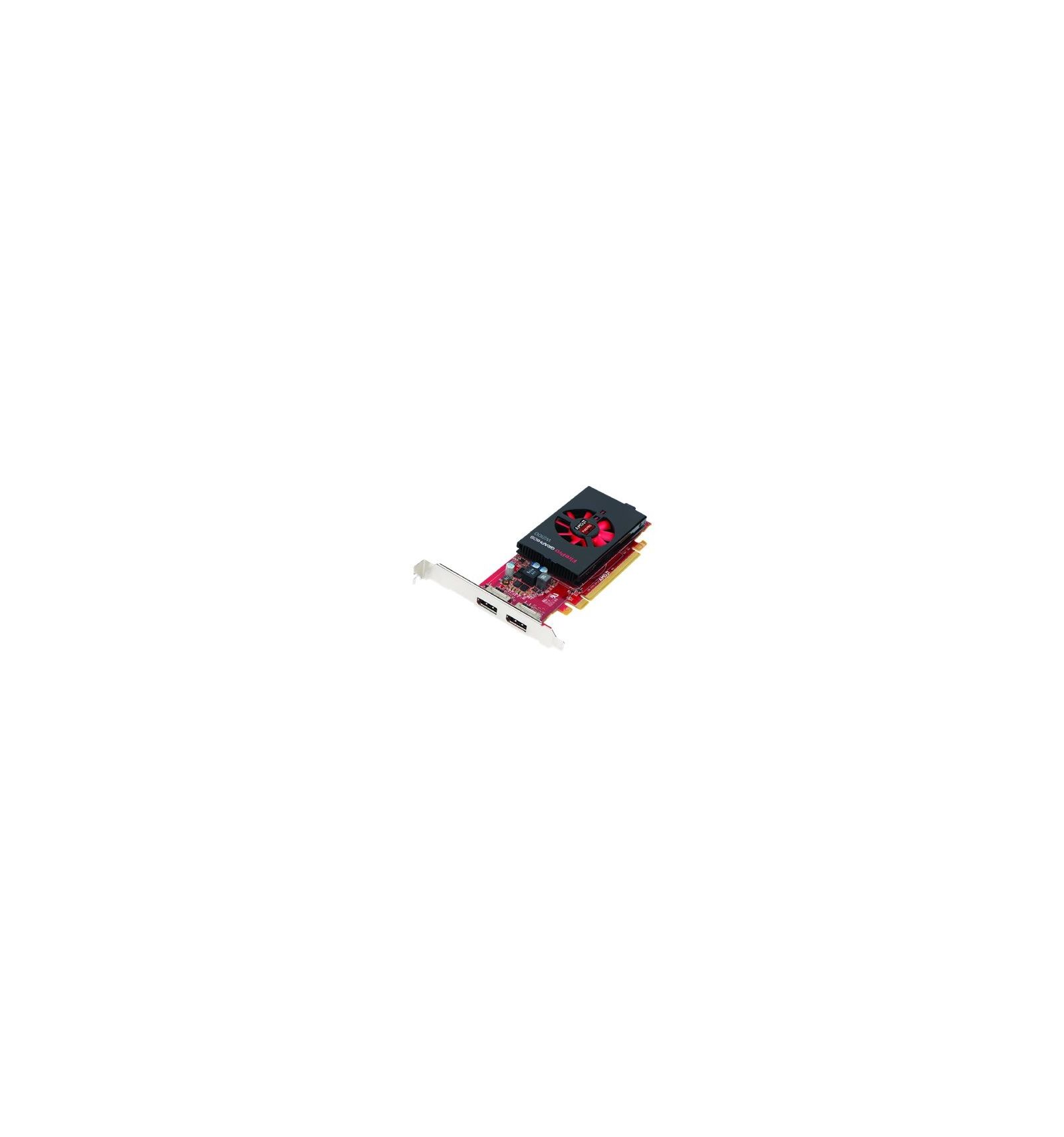

- #DELL 2 GB AMD FIREPRO W4100 PROFESSIONAL GRAPHIC CARD DRIVERS#
- #DELL 2 GB AMD FIREPRO W4100 PROFESSIONAL GRAPHIC CARD DRIVER#
- #DELL 2 GB AMD FIREPRO W4100 PROFESSIONAL GRAPHIC CARD FULL#
- #DELL 2 GB AMD FIREPRO W4100 PROFESSIONAL GRAPHIC CARD PC#
The newest drivers as of August 22nd were used on all cards. To emphasise GPU performance variations over the base CPU speed influence, all cards were run on a standard 3.5 GHz quad-core Haswell Core i7-4770K platform with 8 GB RAM and Windows 7 Ultimate, running off an Intel enterprise SSD drive.
#DELL 2 GB AMD FIREPRO W4100 PROFESSIONAL GRAPHIC CARD FULL#
The single precision FP is usually left full speed in both cases, though, as it affects gaming physics competitiveness on the consumer side.Īs said, here we have a quick look at the two new OpenGL GPUs from Nvidia – Quadro K2200 and K5200 – as well as K5200’s head-on competitor from AMD, the FirePro W8100. For instance, the otherwise same dies of the R7 290X and FirePro W8100 have 8 times difference in DP FP performance, and Nvidia’s GPU dies follow a similar path.

If relying on GPGPU computing, these cards offer an added advantage: their double-precision FP performance is usually fully enabled – not crippled as in their consumer twins. Note that W8100 has twice the memory bus with compared to K5200, at 512 bits vs 256 bits. In this roundup, we have the Quadro K2200 which has 4 GB VRAM, while K5200 and W8100 both have 8 GB VRAM. Game developers can also benefit from humongous local card memory, as they can optimize the game memory usage in advance for future consumer cards to arrive a few years later - way in advance. Those extra pixels do need extra horsepower to drive them, plus the extra memory. And yes, many professional 3D apps can readily make use of 4K and 8K resolutions right away today: whether it is 3D city modelling, or detailed engine assembly review, or complex molecular interaction simulations. The capability to drive two 8K displays, plus the allowance for larger in-memory compute jobs to use all those teraflops without slowing down to cross over PCIe, demands greater local memory. For instance, the AMD Radeon R7 290X has 4 GB RAM, while its equivalent, the FirePro W9100, has a whopping 16 GB. OpenGL professional cards also have between two and four times more local memory than the consumer ones.
#DELL 2 GB AMD FIREPRO W4100 PROFESSIONAL GRAPHIC CARD DRIVER#
The full OpenGL functionality enabling of the professional GPUs leads not only to, say, triple the OpenGL benchmark advantage, but also the proper OpenGL application operation necessary to pass all the expensive professional apps certification procedures and driver optimizations – one of the reasons, besides the margin aims, why those cards cost four to five times more than their consumer brethren with similar chips. And that’s where the difference between otherwise identical GPU dies on the consumer and professional card varieties comes in.
#DELL 2 GB AMD FIREPRO W4100 PROFESSIONAL GRAPHIC CARD PC#
While DirectX, for better or worse, dominates the PC 3D graphics landscape, the inherently more reliable and precise OpenGL is the API of choice for most professional applications.

Sure, Intel’s Larabee was originally targeted at this same market, but, as we all know, failed and moved to the HPC area for pure compute, where it thrives now.

Since the first graphics processors that hardwired the basic display operations of displays like the NEC 7220 and Hitachi 63484 in the early 1980s, they were followed by the first PC cards – the IBM PGA – some 30 years ago, the need for dedicated graphics processing hardware has set in firmly at the high end of the PC landscape.Īt that time it was 2D only, yet it still cost a couple of grand per adapter card: a price class that has seemingly kept to this day, if talking about professional graphics cards like the ones from Nvidia and AMD that are included in this roundup review.Īfter the loss of the original Silicon Graphics, as well as the other two major independent true OpenGL focused 3D professional GPU chip brands ( 3DLabs and E&S), which was a big loss in terms of features and capabilities of those processors, what we have today is the duopoly of Nvidia and AMD/ATI in this space.


 0 kommentar(er)
0 kommentar(er)
